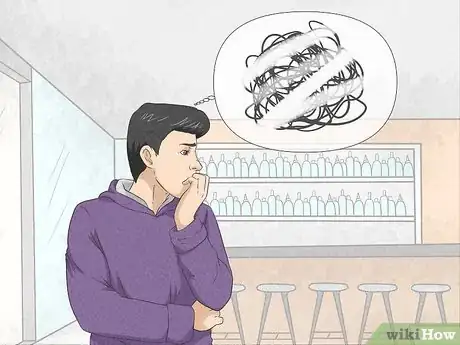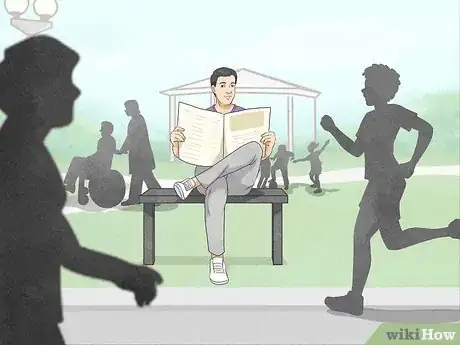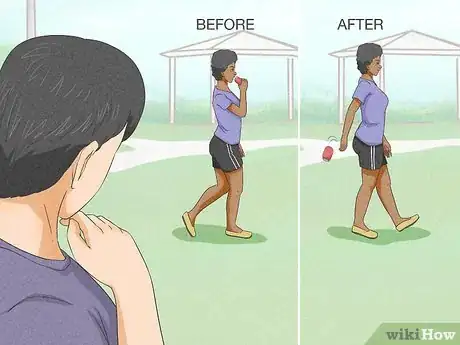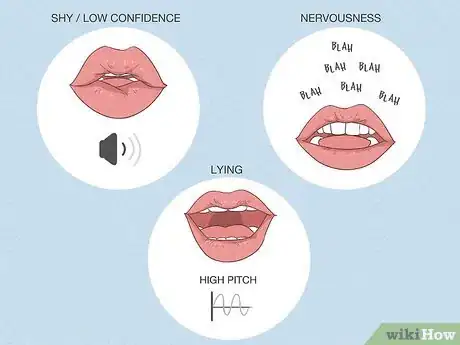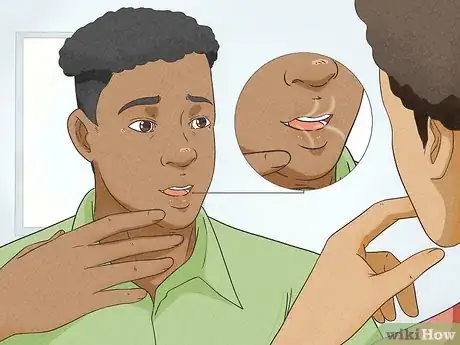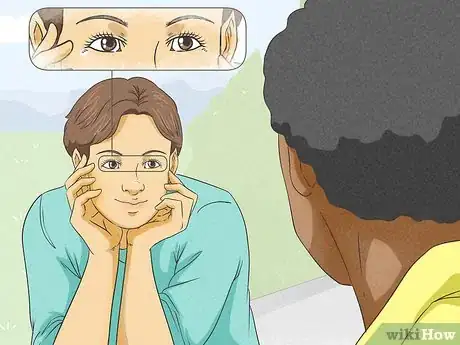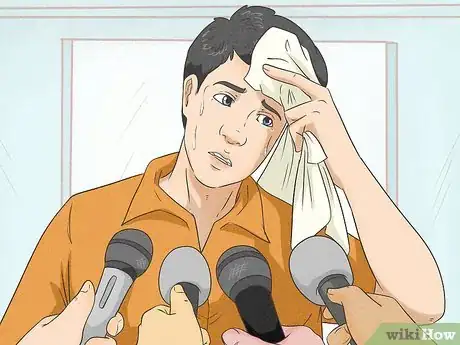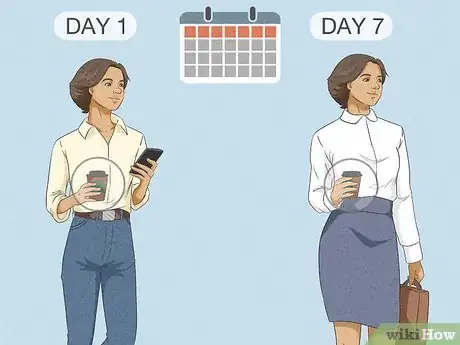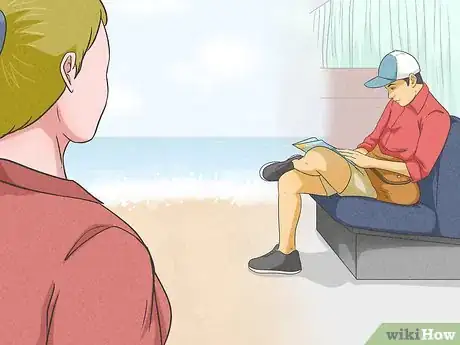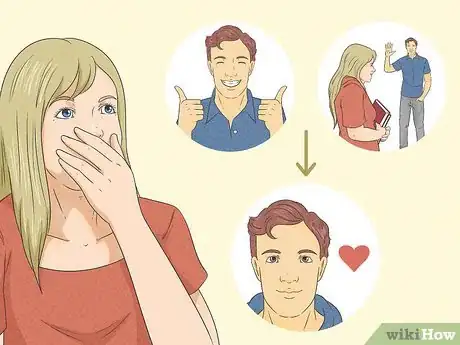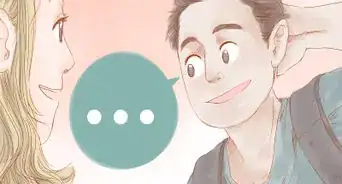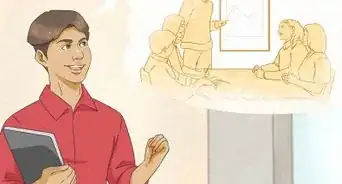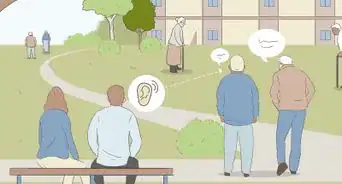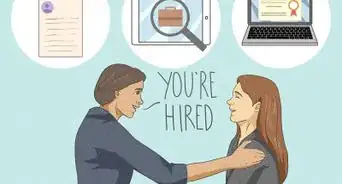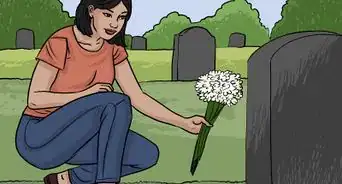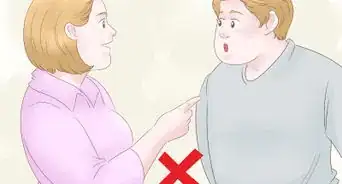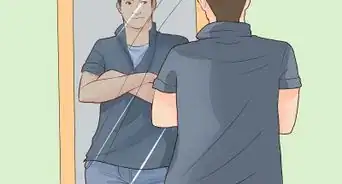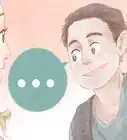wikiHow is a “wiki,” similar to Wikipedia, which means that many of our articles are co-written by multiple authors. To create this article, 27 people, some anonymous, worked to edit and improve it over time.
wikiHow marks an article as reader-approved once it receives enough positive feedback. In this case, 93% of readers who voted found the article helpful, earning it our reader-approved status.
This article has been viewed 293,168 times.
Learn more...
There are benefits to being observant. Observing people and using your findings could help you land your next job, catch someone in a lie, get people on your side in an argument or win the romantic partner of your dreams. People are constantly (unwittingly) putting out telltale signals about who they are and what they want - you just have to know what to look for. If you want to learn how to make sense of people's body language, facial expressions and communication styles without letting on that you're watching, see Step 1 and beyond.
Steps
Being More Observant
-
1Don't be in a hurry. Do you tend to fly through your day, rushing from one task to the next without taking time to drink things in? Being observant takes practice, and it starts with the ability to slow down, stop, and watch. You can't do that if you're always in a hurry, and trying it once or twice won't cut it, either. You can practice being more observant by slowing down in any given situation and taking time to 'smell the roses,' so to speak.
- Start with your own family members. Do you have a habit of half-listening when your partner or child tells you about his or her day? Put down your phone or tablet, face the person who's talking and look him or her in the eye. Part of being observant is being a good listener.
- If you tend to breeze into your workplace every morning, saying "hello" without bothering to make eye contact, start taking a different approach. Stop and talk with your boss or coworker for several minutes, giving them your complete attention. You'll notice so much more this way.
- Walking down the street, riding the subway or moving through any public setting gives you the opportunity to practice being observant. Don't just look right through people - look at them. Notice them. What do you see?
-
2Get out of your head. Being constantly preoccupied with your own thoughts, desires, insecurities and so on is a distraction from observing other people. For the sake of being more observant, put your own needs aside and concentrate on the other person. This takes practice, since thought patterns are actually habits that aren't easily changed. Be more aware of where your thoughts are leading, and consciously focus on other people so you can observe them.
- If you walk into a party and are immediately concerned with finding the coolest person to talk to, getting to the bar ASAP or finding the closest exit, you're not giving your brain the space to observe people. Take a step back and let yourself focus on other people (you'll have a better time that way, too).
- When you're talking to someone face to face and you're worried about whether your lipstick's on straight and how your laugh sounds, you aren't being observant. Don't worry about yourself; focus on the other person - you'll learn a lot more that way.
Advertisement -
3Don't be obvious. You're not going to get an accurate reading of someone if you make it clear that you're trying to interpret their every move. At best, the person will unconsciously start performing a little bit, projecting what they want you to see instead of the truth; at worst, the person will find your inquisitiveness annoying or even intrusive. You should act like your normal self, even when your mind is making careful and calculated assessments.
- Don't stare. People will notice that something's up if you keep looking them up and down. Even if your brain is entirely focused on someone, make sure your eyes flick away when appropriate.
- Be inconspicuous if you're trying to observe someone from afar. If you're at a party, for example, don't stand in a dark corner tracking the person your'e interested in observing. Or if you do decide to be a fly on the wall instead of participating, make sure you're in a spot where no one will happen upon you and decide that you're being creepy.
-
4Look when they think no one's watching. People reveal a lot about themselves when they don't think anyone's going to notice what they're doing. Be especially observant of people during those times when they feel comfortable letting it all hang loose. This will give you a baseline reading of the person, cluing you in to his or her true emotions.
- You might notice the expression on your coworker's face when she walks down an empty hallway, for example.
- Pay attention to how people look after they're finished with a conversation, during that break when they have a moment to themselves.
- Sit on a park bench or at a cafe table with an open newspaper in front of you, and take time to look around at others around you.
-
5Notice differences. Once you have a baseline reading of someone, you can compare it to later behavior and note the differences. This can clue you in to interesting facts about the person, like what they might want to hide and how they express their true feelings.
-
6Take note of reactions. People's immediate reactions to different situations can be giveaways as to their true thoughts and feelings. While observing someone, notice his or her facial expression the moment he or she is given a piece of news. You can deliver the news yourself or watch as someone else delivers it and take note of what happens.
- For example, if you and your friends are out to dinner and one friend announces she just got a raise of work, observe other people's reactions. Someone who waits a beat before expressing congratulations might not be overjoyed to hear the news; could jealousy be at play?
-
7Look for patterns. Write down what you observe about people so you can begin to notice patterns. This can help you gain a deeper understanding of an individual, but it's also a good way to understand humanity at large. You'll start to pick up on the little details that betray people's preoccupations, desires, stressors, fears and weaknesses. The accumulation of this kind of information will help you get better and better at observing people and making split-second deductions that turn out to be true.
Knowing What to Look For
-
1Watch people's body language. Body language is incredibly revealing. People often say one thing, but their body language tells a totally different story. Look at the positioning of people's head, arms, hands, back, legs and feet. What can you learn from the language of a person's body?
- If someone says "yes" while shaking his or her head, that can indicate the answer is actually "no."
- If someone refuses to make eye contact, they're probably uncomfortable. (It's a common misconception that lack of eye contact is an indication of lying; actually, the opposite is true.)
- If someone leans back or away while talking, that can indicate the person is stressed out or afraid.
- If someone crosses his or her arms, that usually means he or she is feeling uncomfortable with a situation.
- If someone's hunched over or has bad posture, a confidence issue might be the reason.
- If someone taps his or her feet, anxiety or impatience might be at play.
- If a woman touches her throat, she might be feeling vulnerable.[1]
- If a man strokes his chin, he might be feeling anxious.[2]
-
2Look closely at facial expressions. People obviously communicate with their faces by expressing everything from happiness to devastation, but how skilled are you at interpreting the subtle differences between emotions? Some people are naturally empathetic and able to tell the difference between emotions as close as impatience and irritation, while others have trouble distinguishing emotions as different as thoughtfulness and boredom.[3] The better you are at telling emotions apart, the better you'll be at understanding the people around you.
- If you find that you have a lot of room for improvement in this area, practice focusing on defining people's emotions. For example, when someone smiles, don't automatically assume "happy." Look for subtleties that can help you find the deeper, truer emotion. Is the person smiling with his or her entire face (including the eyes) or just the mouth? The former might be an indicator of elation, while the latter might be an indicator of mile amusement.
- Studies show that reading more literary fiction can help you develop greater empathy[4] , which results in a greater power of observation.
-
3Listen carefully. The way a person speaks is another big indication of how he or she is feeling. The pace, volume, and pitch of speech are all important factors. Notice whether the person you're observing is speaking quickly or slowly, higher or lower than normal, and whether their voice is loud or soft.
- People who whisper or speak quietly may be shy or have low confidence.
- Nervousness is often expressed through faster speech.
- People tend to speak at a slightly higher pitch than normal when they're lying.
- When people want to assert dominance, they speak at a slightly lower register.
-
4Monitor people's breathing. This is one of the easiest physical signs to observe, since it's something that most people can't control. Notice whether someone is breathing heavily or quickly, and whether their voice sounds breathy.
- When someone's breath quickens, it could indicate that they're feeling nervous or stressed out about the topic at hand.
- Heavy breathing may be a sign of health problems.
- It could also mean they're feeling attracted to someone - possibly you . . .
-
5Look at the size of their pupils. Tiny pupils can be an indicator that someone's using drugs. Dilated pupils can be a sign that someone is feeling pleasure or attraction.[5] When you're observing someone's pupils, make sure light isn't a factor; bright lights will make the pupils shrink, while low light makes them dilate.
-
6Look to see if they're sweating. It's a clear indication that adrenaline is rushing through someone's body, which could mean they're feeling stressed, exhilarated or afraid, depending on the situation. Look for a light glow on someone's face, or dampness in the armpit area of someone's shirt. (Take the weather and room temperature into account, of course).[6]
-
7Look at people's clothes and hair. Body language, facial expressions and other physical indicators aside, you can learn a lot by simply looking at the way a person presents to the world. The clothing, accessories, hairstyle and makeup people wear can be extremely telling.
- First take note of the obvious: a person wearing an expensive business suit is probably a white collar worker; a person wearing a cross around her neck is probably Christian; a person sporting a Grateful Dead t-shirt and Birkenstocks is probably a hippie - you get the picture.
- Look more closely for details about a person's life: the white hairs coating the cuffs of your coworker's black pants. The dried mud caked on the bottom of someone's shoes. A person's nails bitten to the quick. A receding hairline masked with a careful combover. What do these subtle details add up to?
-
8Notice people's habits. When you're observing someone over time, check out what makes that person unique. What does she read on the train every day? What does he drink to perk up in the morning? Does he bring his lunch or order out every day? Does she conspicuously avoid the subject of her husband? You can learn something from each of these observations.
Interpreting What You See
-
1Use your imagination. Now that you've taken the time to observe someone, what can you learn from the information you gathered? Imagining what's behind people's unique body language and personality quirks is all part of the fun of observing them. Whether you're just people watching or you're trying to better understand someone you know, using your imagination to connect the dots is the next step.
- If you're people watching, it can be fun to make up stories about people. That man you see riding the train every morning - what's his background? Based on what he wears and where he gets off the train, what can you deduce?
- It's fun to use your imagination to try to figure out where people are coming from, but if you really want to understand people, you need to find out if you're right.
-
2Ask why to come up with a theory. You already have the "what" in this scenario - your observations. The logical next step on your path to understanding someone is to figure out why something is true. This will give you a clearer picture of what's going on in someone's life and where they might be coming from.
- For instance, if you observe that someone begins to talk faster and sweat when you ask her about her future plans, why do you think she reacts in this way? Could she be anxious about failing at something she's trying to achieve? Might she be lying about something?
- Narrow your theory down by asking pointed questions or observing the person more carefully.
- Put the pieces together. Once you have a theory in mind, determine whether your other observations support it.
-
3Figure out if you're right. When you start making deductions based on your analysis of your observations, it's important to figure out a way to know if you're right. If you tend to draw a lot of false conclusions, your observation technique might need some improvement.
- Let's say you've been noticing that your friend smiles broadly when he's talking to you, his pupils often look dilated, and his hands tend to get a little sweaty. (Plus he wears blue every day because you told him it looks good with his eyes, and he waits for you in the afternoons after class). You've taken the evidence into account and concluded that your friend is nursing a crush on you. Determine if your deduction is correct by flirting with him and observing his response - or you could just ask him if he has feelings for you.
-
4Learn by trial and error. Sometimes you'll find that your observations were correct, and other times you'll be completely wrong. While people often betray their emotions through body language and other means, they're also quite adept at keeping their feelings private. The goal of learning how to observe people is a worthy one - ultimately you'll gain a better understanding of people in general - but don't make the mistake of believing you can read people's minds just by looking at them. The mystery that naturally surrounds people is part of what makes them so fun to observe.
Community Q&A
-
QuestionWhat are some simple problems I can observe around me?
 Community AnswerIf you go to a mall or department store, disobedient children is a simple and common problem. Relationship problems may also be evident. People struggling with carrying their purchases is another.
Community AnswerIf you go to a mall or department store, disobedient children is a simple and common problem. Relationship problems may also be evident. People struggling with carrying their purchases is another. -
QuestionHow would I observe a single girl every day?
 Community AnswerYou would observe her the same way you would observe anyone else. However, if you are watching her because you find her attractive, it's probably a good idea to tell her that you like watching her. Most people don't like it when others just stare at them.
Community AnswerYou would observe her the same way you would observe anyone else. However, if you are watching her because you find her attractive, it's probably a good idea to tell her that you like watching her. Most people don't like it when others just stare at them. -
QuestionHow can I tell if a person is cheating on me?
 Community AnswerLook for small hints. If they are avoiding you, if they are texting secretively, if they leave the house and are lying about where they are going can all be signs they are seeing someone else. If you notice this, they might not be cheating, but you should start being more aware.
Community AnswerLook for small hints. If they are avoiding you, if they are texting secretively, if they leave the house and are lying about where they are going can all be signs they are seeing someone else. If you notice this, they might not be cheating, but you should start being more aware.
Warnings
- You can be caught and if you are not careful you could get into trouble, wikiHow or the author claim no responsibility for any consequences coming as a result of this article.⧼thumbs_response⧽
- Observing someone too much can affect the privacy of the person you are observing.⧼thumbs_response⧽
References
- ↑ http://www.businessinsider.com/tips-on-how-to-read-people-2011-6
- ↑ http://www.businessinsider.com/tips-on-how-to-read-people-2011-6
- ↑ http://well.blogs.nytimes.com/2013/10/03/well-quiz-the-mind-behind-the-eyes
- ↑ http://well.blogs.nytimes.com/2013/10/03/well-quiz-the-mind-behind-the-eyes
- ↑ http://www.bodylanguageexpert.co.uk/what-do-dilated-pupils-mean.html
- ↑ http://www.psychologytoday.com/blog/spycatcher/201201/becoming-great-observer
About This Article
If you want to be better at observing people, pay attention to their body language, especially when they’re talking and when they think no one is looking. For instance, if you notice someone is tapping their feet, they may be feeling anxious or impatient. If someone has their arms crossed or is hunching, they may be feeling uncomfortable or self-conscious. Also, pay attention to a person’s tone of voice, volume, and the pace of their speech when they’re talking, as these can help you understand how they’re feeling. Keep reading for tips on watching people without being noticed!

